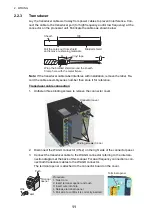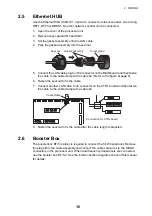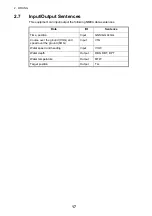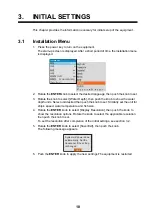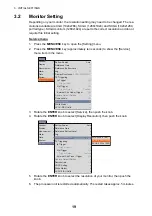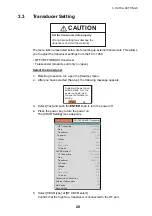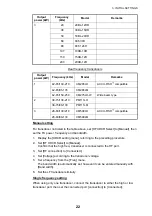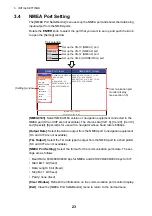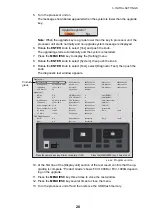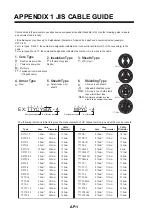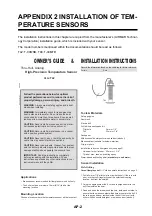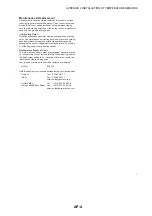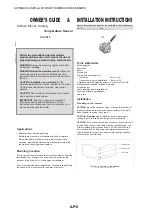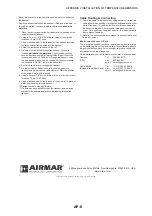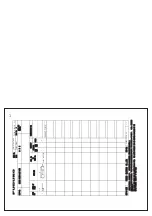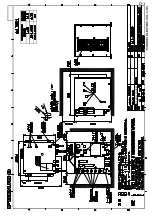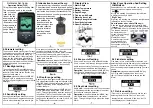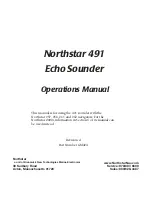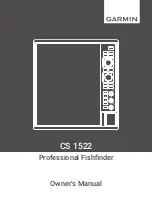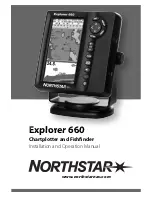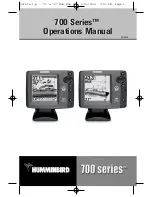
3. INITIAL SETTINGS
25
3.6
Calibration Setting
The [Calib] menu mainly lets you apply offsets to speed, water temperature, and bot-
tom level.
[Sound Speed]
: Adjust the sound velocity of the TX/RX signal if the depth indication
is incorrect, because of water temperature or salinity density.
[Temp]
: If the water temperature indication is wrong, you can correct it here. For ex-
ample, if the water temperature indication is 2°F higher than actual water temperature,
enter -2°F.
[Bottom Level]
: In the default bottom level setting (+0), the equipment judges con-
secutive strong echoes to be bottom echoes. If in that setting, the depth indication is
unstable, adjust the bottom level. If vertical lines extend upward from the bottom echo
in the bottom lock display, lower the bottom level to erase the vertical lines. If the level
is too low, however, it may be difficult to distinguish bottom fish from the bottom echo.
[Zero Line Rejection]
: Turn the zero line (transmission line) on or off. When it is
turned on, the transmission line disappears, which allows you to see fish echoes near
the surface clearly. The length of the transmission line changes with transducer used
and installation characteristics. If the width of the transmission line is 0.4 m (default
value) or more, set the transmission line width with [Zero Line Area], as below.
[Zero Line Area]
: This feature adjusts the transmission line so that the transmission
line disappears when the menu item [Zero Line Rejection] is turned on. For a long tail
increase the value. If the transmission line does not disappear, lower the TX power.
[Zero Line Fill]
: Turn off to see fish echoes within 1 m from the surface.
[Draft]
: The default depth display shows the distance from the transducer. If you
would rather show the distance from the sea surface, set your ship’s draft. The draft
line for HF and LF can be set respectively.
[Gain ADJ]
: If the gain is too high or too low, or the gain for the low and high frequen-
cies appears unbalanced, you can compensate it here.
[Fish Size]
: Compensate for wrongful indication of fish size.
Note:
Transducer CM265LH has a data sheet, but other transducers do not. The data
sheet contains the gain calibration value for 50 kHz. Enter the value shown on the data
sheet. The gain calibration value is calculated from TVR and RVR values, using the
formula shown below. For the transducer with no data sheet compare,
in the field, set
Sound Speed
Temp
Bottom Level
Zero Line Rejection
Zero Line Area
Zero Line Fill
Draft
Gain ADJ
Fish Size
1500.0 m/s
0.0ºF
On
4.5ft
On
0
Bottom Level
Zero Line Rejection
Zero Line Area
Draft
Gain ADJ
Fish Size
On
4.5ft
0
For [Setting] tab
For [External fish finder] tab
Summary of Contents for FCV-1900/B/G
Page 46: ...D 1 14 Apr 2015 H MAKI...
Page 47: ...D 2 15 Apr 2015 H MAKI...
Page 48: ...D 3 15 Jan 2015 H MAKI...
Page 50: ......
Page 51: ......

